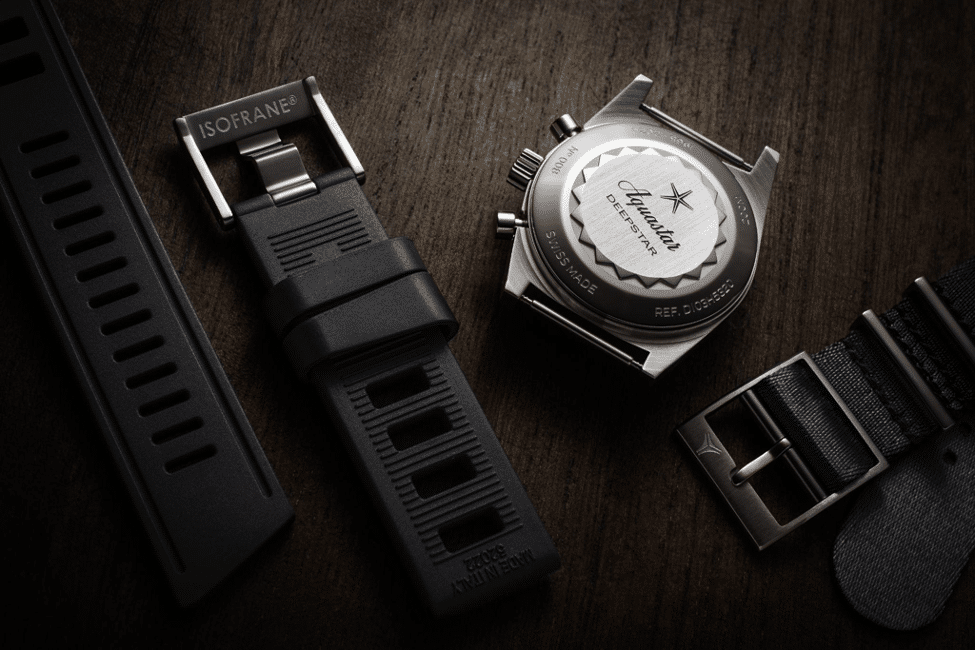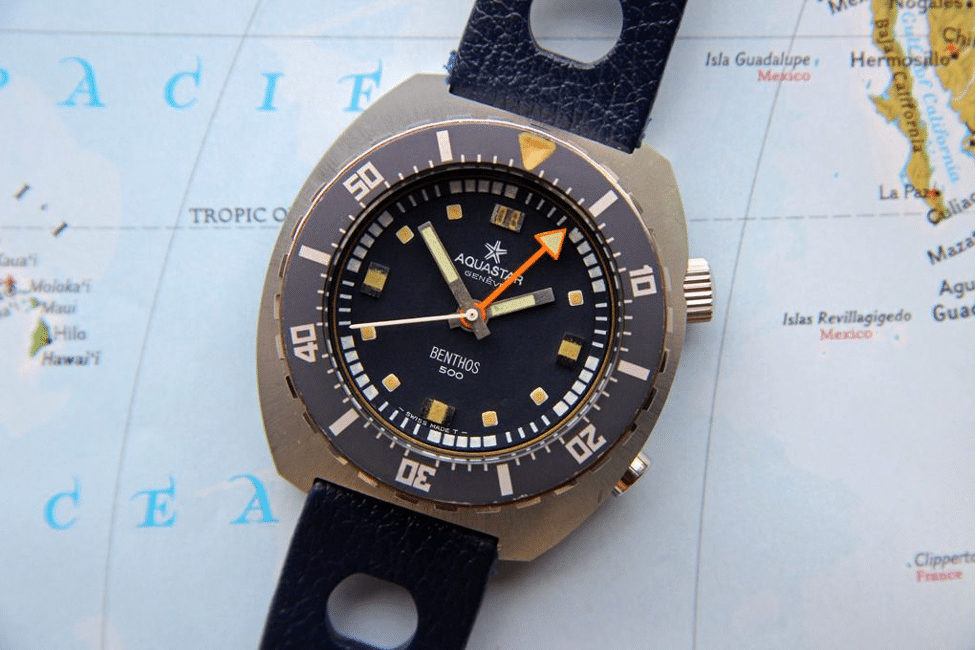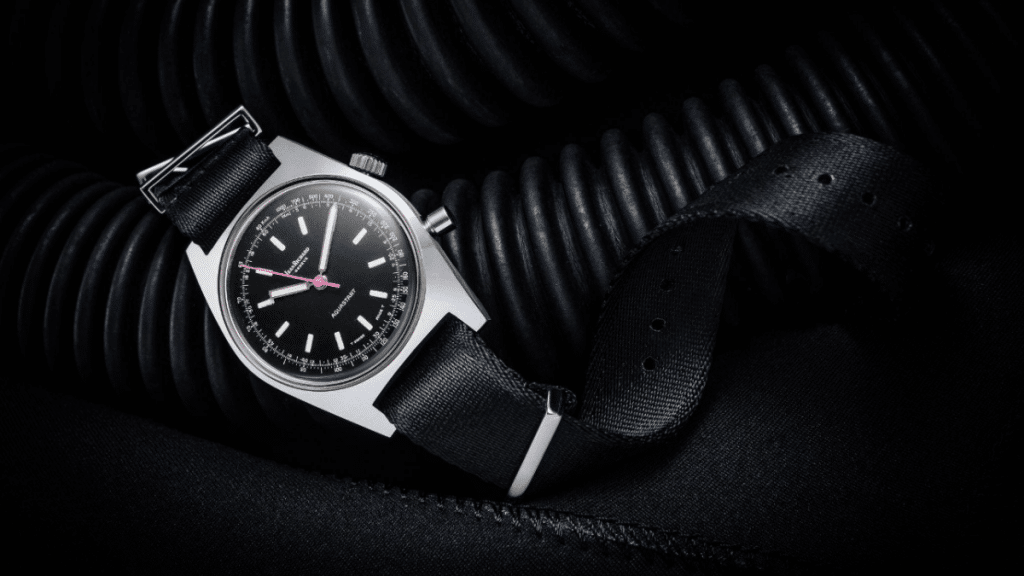Diving watches are crucial tools for underwater explorers, helping divers track time and ensuring their safety during deep-sea adventures. However, these timepieces face a number of challenges when submerged, most notably the effects of water depth and pressure. Understanding how water depth and pressure influence a diving watch’s performance is essential for anyone using these watches in extreme conditions.
In this article, we will dive deep into how these factors affect diving watches, exploring their design, construction, and the innovations that allow these watches to function reliably under the most extreme underwater conditions.
Understanding the Role of Diving Watches
Before delving into the effects of water depth and pressure, it’s important to first understand the role of a diving watch. While many watches today are designed to withstand occasional splashes or brief immersion in water, a true diving watch is built to handle extended exposure to the elements, especially at great depths.
Diving watches are not just about aesthetics. They are functional tools designed to ensure the safety of divers, primarily by keeping track of time and helping them monitor their dive. Features typically include:
- Water Resistance: This refers to a watch’s ability to withstand water exposure without being damaged.
- Rotating Bezel: A one-way rotating bezel is a key feature, helping divers monitor elapsed time to prevent decompression sickness.
- Legibility: Clear and luminous dials and hands ensure readability in low-light underwater environments.
- Pressure Resistance: They are designed to function accurately even under high pressure.
Water Pressure and Depth: The Fundamentals
Water pressure increases as you descend deeper into the ocean. For every 10 meters (33 feet) below sea level, the pressure increases by approximately one atmosphere (atm), or 14.7 pounds per square inch (psi). This means that a diver at 30 meters (about 100 feet) is exposed to 4 atm of pressure, and at 100 meters (328 feet), that pressure increases to 11 atm.
Water pressure can cause several challenges for diving watches. The case material, crystal, movement, and even the watch’s seals need to be specially designed to cope with the stress placed on them. Failure to do so can result in the watch malfunctioning, fogging up, or even breaking down entirely.
The Influence of Pressure on Diving Watches
1. Case Material and Construction
Diving watches are built to withstand high pressures. The materials used to create the case of a diving watch must be durable enough to handle the immense pressure exerted at depth. Common materials include stainless steel, titanium, and ceramic. Each of these has unique properties:
- Stainless Steel: The most traditional material for diving watches, offering a solid, durable case.
- Titanium: Lighter and more resistant to corrosion than stainless steel, making it ideal for extended dives.
- Ceramic: Resistant to scratches and pressure but can be more brittle than metal cases.

2. Watch Crystal:
The crystal on a diving watch is another area where pressure has a direct effect. The higher the pressure, the more the crystal is forced against the case. This pressure can cause the crystal to warp or even crack. Typically, high-quality diving watches use sapphire crystal, which is incredibly hard and scratch-resistant. Sapphire is also able to withstand greater pressure than other materials like mineral glass.
3. Seals and Gaskets:
The gaskets and seals within a diving watch are crucial for maintaining its water resistance. At high depths, the pressure can compress and deform these seals. Over time, exposure to pressure and water can cause seals to deteriorate, leading to leaks and water damage. This is why it’s important to regularly service diving watches, replacing worn-out gaskets to ensure continued performance at depth.
4. Movement and Mechanical Stress:
Inside the watch, the movement (whether mechanical or quartz) must be able to withstand the internal pressure caused by the external pressure on the case. Mechanical movements are often more sensitive to changes in pressure, and excessive pressure can cause them to malfunction. However, many modern diving watches use movements that are specifically designed for high-pressure environments. These movements are sealed inside pressure-resistant cases, preventing damage.
5. Luminous Technology:
The deeper you go underwater, the less light there is to see. This is why diving watches are designed with luminous markers and hands. These are usually powered by a luminescent paint such as Super-LumiNova, which allows the watch to remain legible even in total darkness. While the luminous technology itself is not directly affected by pressure, the performance of the watch’s movement, and the overall structural integrity of the watch, can affect how effective the luminous features are at depth.
How Depth Affects Watch Functionality
The deeper a diver goes, the more the pressure increases. When diving watches are rated for specific depths, this is based on the watch’s ability to withstand the pressure at that depth. A typical diving watch is rated to handle depths of 200 meters (660 feet) or more, with some watches designed to withstand depths of up to 1000 meters (3300 feet) or more.
Let’s look at how depth influences the different components of a diving watch:
1. Water Resistance:
Every diving watch is tested to ensure it is water-resistant at specific depths. Most diving watches are rated for 200 meters, but some professional-grade models are rated for 500 meters, 1000 meters, or even more. Watches with higher depth ratings have thicker cases and more robust seals to handle the increasing water pressure.
2. Compression of the Watch Case:
As a diving watch descends, the case undergoes compression due to the surrounding pressure. While this compression is usually within tolerable limits for most diving watches, if the watch is not properly designed to withstand these pressures, it can lead to misalignment of internal components, fogging of the crystal, or even water leakage.
3. Gasket and Seal Durability:
Diving watches rely on rubber gaskets or O-rings to create a watertight seal. At greater depths, the material of these seals can be compressed more than usual. Over time, this can cause them to lose their ability to keep water out, which is why regular maintenance and care are essential for deep-sea divers who rely on these timepieces for safety.
4. Pressure-Resistant Valves:
For extreme depths, some diving watches come equipped with a helium release valve. When divers reach depths of over 300 meters (984 feet), gases like helium can build up inside the watch, causing the crystal to pop off when they ascend back to the surface. A helium release valve allows the gas to escape without damaging the watch, ensuring the integrity of the timepiece during decompression.
5. Effects on the Movement:
Diving watches use mechanical or automatic movements, and these can be affected by extreme pressure if the case is not well designed. The precision of the movement can be compromised, and the watch might lose time or stop functioning altogether. To address this, some high-end diving watches utilize quartz movements, which are less susceptible to pressure and have a higher tolerance for extreme conditions.

Innovations in Diving Watch Design
To combat the effects of water depth and pressure, watchmakers continue to innovate and improve diving watch designs. Several advancements have been made to ensure that watches perform reliably at extreme depths:
- Ceramic Bezel Inserts: These are used to prevent scratches and maintain the integrity of the bezel, which is critical for measuring dive time.
- Pressure-Tested Casebacks: Casebacks are designed to distribute pressure evenly, reducing the chance of deformation.
- Advanced Seals and Gaskets: Modern diving watches use high-tech materials such as synthetic rubber or silicone gaskets that can withstand the compression and temperature fluctuations encountered at depth.
Conclusion
The impact of water depth and pressure on the performance of diving watches cannot be overstated. These timepieces are designed to withstand the harshest conditions, but their performance can be significantly affected if not properly constructed and maintained. The materials used in the case, the quality of the seals, the type of movement, and the durability of the crystal all play essential roles in ensuring the watch remains functional and reliable under extreme pressure.
For divers, understanding the pressure limits and water resistance ratings of their watches is essential for ensuring safety. It’s also crucial to invest in high-quality, well-maintained diving watches that are specifically built to handle the challenges of underwater environments. By doing so, divers can continue to rely on these timepieces for accurate timekeeping and crucial safety functions during their dives, no matter how deep they go.


